Nuclear drills, threats to Western capitals…. and then a desperate peace offering: Military experts explain why flailing Putin has reached his ‘high water mark’ in Ukraine… and how the frontline tide could soon turn on him
Vladimir Putin has ramped up nuclear warfare rhetoric in recent months and doubled down on threats to the West — while Russian troop losses have soared.
Here, retired military intelligence officer Col. Jonathan Sweet and foreign policy writer Mark Toth argue that the Russian president’s furious escalation indicates he may have reached his “high water mark” in Ukraine.
The experts discuss what the West and Kiev should do to exploit Putin’s moment of ‘weakness’ and turn the tide on the front line against his invading forces for good.
Vladimir Putin has ramped up the rhetoric about nuclear warfare and redoubled threats to the West
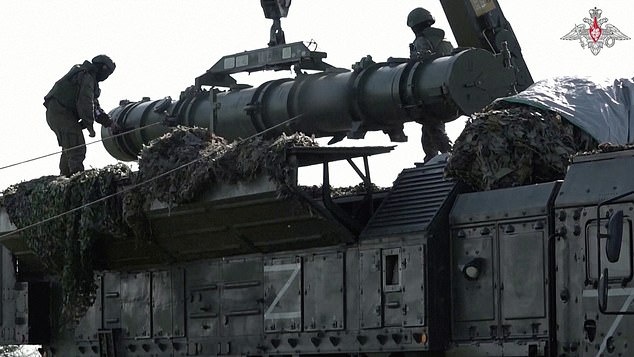
Chilling footage shows Russian troops conducting tactical nuclear weapons exercises near the Ukrainian border
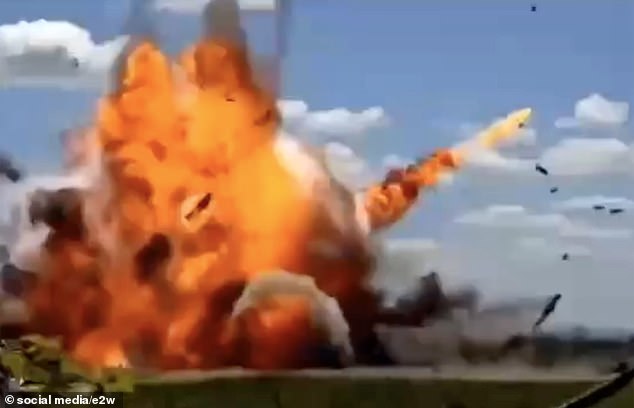
Russian soldiers film how a Ukrainian drone smashes their tank to pieces
How do you spell despair in the Kremlin?
ESCALATION.
It comes in the form of practicing the deployment of tactical nuclear weapons, renewed threats in state media to strike Western capitals with nuclear weapons, moving nuclear weapons to Belarus, reminding the West how many nuclear weapons there are in Kaliningrad, and threatening to attack NATO airfields. where Ukrainian pilots are trained to fly F-16s.
Now there is a second sign of desperation.
Last Friday, Russian President Vladimir Putin offered to halt hostilities and begin negotiations with Ukraine to end the war. His conditions? Kiev must withdraw troops from the four regions that Moscow annexed in 2022 and abandon their plans to join NATO.
That will not happen.
Ukrainian President Volodymyr Zelensky summarily rejected Putin’s offer. In an official statement he called it “absurd”, adding: “Russia’s plans are not for peace, but for the continuation of the war, the occupation of Ukraine, the destruction of the Ukrainian people and further aggression in Europe .’
As Dzhokhar Dudayev, a Chechen politician, statesman and military leader of the Chechen independence movement from Russia in the 1990s, once said: ‘Russia always offers negotiations when times are tough, when plans fall apart, to buy time, to regroup , correct mistakes, find a weak spot and then strike again with renewed vigor.’
That describes Putin’s situation. The Russian military is struggling in eastern Ukraine and Crimea – which is why Putin’s so-called selfish ceasefire offer is not being made from a position of strength; rather, it is weakness, and neither the US, NATO, nor Ukraine will accept this.
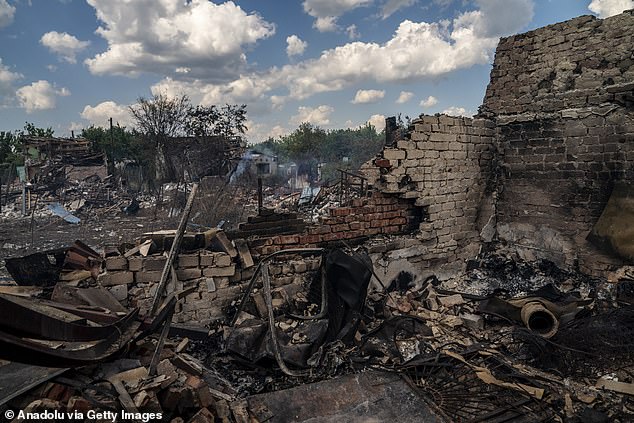
A view of the destruction of a house on the Kostyantynivka front as the war between Russia and Ukraine continues in Donetsk Oblast, Ukraine, on June 20, 2024
Putin’s harsh language was likely intended to influence only one audience: Russian citizens living in Moscow and St. Petersburg. He has reached his highest point and understands that it is only a matter of time before President Joe Biden succumbs to pressure from NATO member states and Zelensky and authorizes ATACMS attacks on Russian forces bringing together Ukraine from anywhere in Russia and pose a threat to Ukraine. side of the border.
Western leaders are finally beginning to realize that the Kremlin is deliberately arming Ukrainian citizens. To put an end to this, Kiev must get the green light from NATO to interdict and destroy weapons systems that fire ballistic missiles, drones and artillery at Ukrainian population centers and critical energy infrastructure – regardless of their place of origin.
Short of an active NATO intervention, there is nothing Putin would fear more than Washington and Brussels authorizing the Ukrainian military to carry out self-defense attacks on targets they consider to pose an immediate threat to Ukraine, using any weapon system also that the US and NATO have made available to them. Putin knows this would be a gamechanger – and one he could not easily win or thwart militarily.
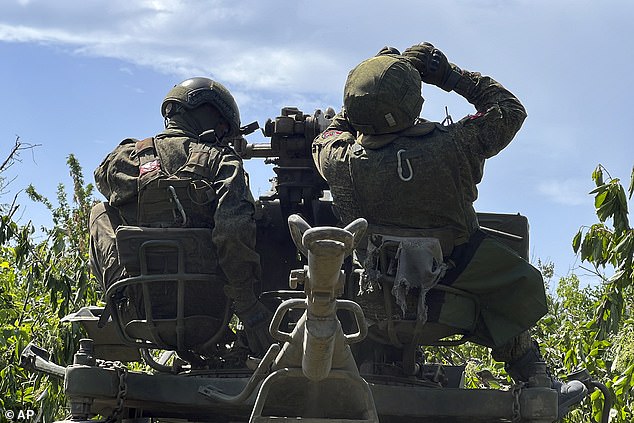
In this photo released by the press service of the Russian Ministry of Defense, Friday, June 21, 2024, Russian soldiers operate an anti-aircraft gun at a secret location in Ukraine
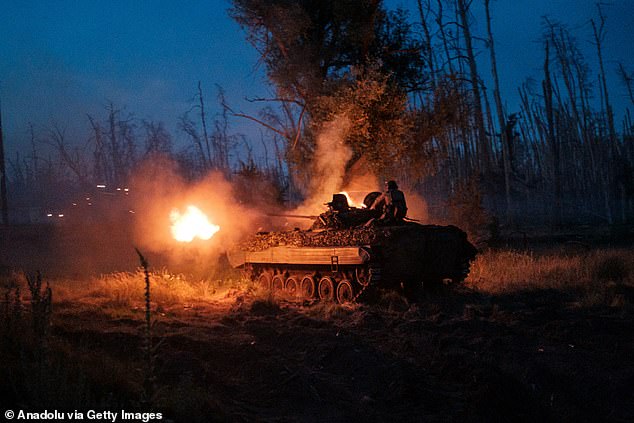
1st Brigade of the National Guard ‘Bureviy’ fires a tank while carrying out a mission in a BMP-2 to fire on Russian positions in the Serebryanskyy Forest, in Luhansk, Ukraine on June 19, 2024
The Russian Spring Offensive in Kharkiv Oblast is beneficial. Biden’s limited green light for US-made weapons for use by the Armed Forces of Ukraine (AFU) had an immediate and devastating effect.
The casualties were described by a NATO official as “astronomical” after the Kremlin launched the attack on May 10 with as many as 30,000 troops. The NATO official added that “Russia probably lost close to a thousand people a day in May.” According to Ukrainian President Volodymyr Zelensky, Russian losses during the offensive were as much as eight times higher than those of the AFU.
Russian soldiers begin to surrender or are captured en masse again. Last week, more than 24 people surrendered at Ukraine’s 3rd assault bridge after a failed attack on a Ukrainian chemical plant in Vovchansk. The week before, the Khortytsia Regional Command reported that more than sixty Russian soldiers had been captured. Another 400 Russian soldiers are currently surrounded in an aggregates factory in Vovchansk.
Putin was probably surprised in Kharkov. Both in terms of Biden’s limited green light on the use of US-made weapons in Russia — and in terms of the fact that Capitol Hill had ultimately passed, on a bipartisan basis, a $61 billion aid package to Ukraine.
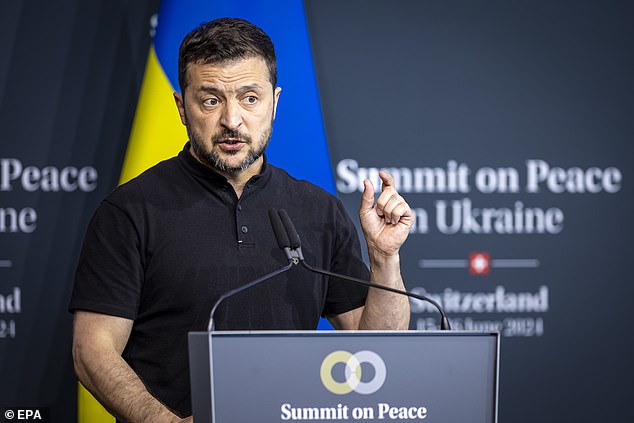
Ukrainian President Volodymyr Zelensky gestures during a press conference of the Summit on Peace in Ukraine in Stansstad near Lucerne, Switzerland, June 16, 2024
For now, Ukraine can ban Russian forces in Russia that threaten Kharkov and wreak havoc on Russian forces in the fighting in the Donbas. However, Biden has given Putin a crucial opening militarily: a refuge.
According to the Institute for the Study of War, Washington’s new rules “reduced the size of Russia’s land reserve by just 16 percent.” Alarmingly, the same report shows that “US policies continue to maintain at least 84 percent of Russia’s land reserve – territory within the reach of Ukrainian ATACMS.”
Conversely, Crimea is now even more vulnerable. Ukrainian deep strikes with Britain’s Storm Shadow, France’s SCALP and ATACMS destroy Russia’s S-300/400 air defense systems – forging air corridors for F-16 fighter jets arriving in the summer.
The bridge over the Kerch Strait, which connects the Crimean peninsula with the Russian mainland, is now even more vulnerable. On June 12, Lt. Gen. Kyrylo Budanov, head of Ukraine’s Defense Intelligence Directorate, said Russia has moved its prized new S-500 air defense missile system to Crimea to protect the Kerch Bridge and surrounding area.
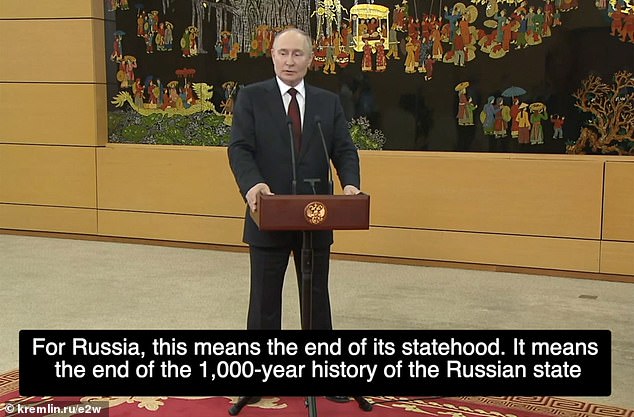
Putin recently said that defeat in Ukraine would mean “the end of the Russian state.”
Crimea is finally becoming untenable, just as retired Lt. Gen. Ben Hodges predicted many months ago. Ukraine is placing conditions on the precision deep strike weapons supplied by the US, UK and France. When the F-16s arrive in the skies over Ukraine, they will help seal the deal.
Things have gone from bad to worse for Putin and his generals. As the rest of the free world gathers in Obbürgen, Switzerland, to discuss how to bring peace to war-torn Ukraine, Putin finds himself increasingly hemmed in militarily and economically. New US sanctions forced the Moscow stock exchange to suspend trading in dollars and euros last week – and Russian banks began closing and going offline.
Putin’s threats of nuclear escalation have not worked and 530,920 Russian soldiers are now dead or injured. Still, Moscow continues to deploy massive artillery and infantry, generating more combat power by securing an additional 4.8 million artillery shells from North Korea and planning the mobilization of another 300,000 soldiers.
But will Russia’s traditional military dependence on the masses be enough now that Ukraine has gained additional capabilities?
Unlikely. His strategy remains one of attrition – wearing down the Ukrainian military and weakening Western support as the prospect of a ‘forever war’ looms. Sanitary areas are his end state – which means he has to hold on to what he has ingested.
Only they are losing ground – most recently in Vovchansk. Time for plan B.
Putin’s call for negotiations is, as Dudayev described, an indicator that Russia is approaching a breaking point. Now is not the time for negotiation. Rather, it is time for the US and NATO to enable Ukraine to drive Russia out of Ukraine and win this war.
Seize the initiative and shut Russia out. Putin is growing increasingly desperate – as evidenced by his hat-in-hand visit to North Korea on Tuesday. The red crenellated walls of the Kremlin begin to close around him.
